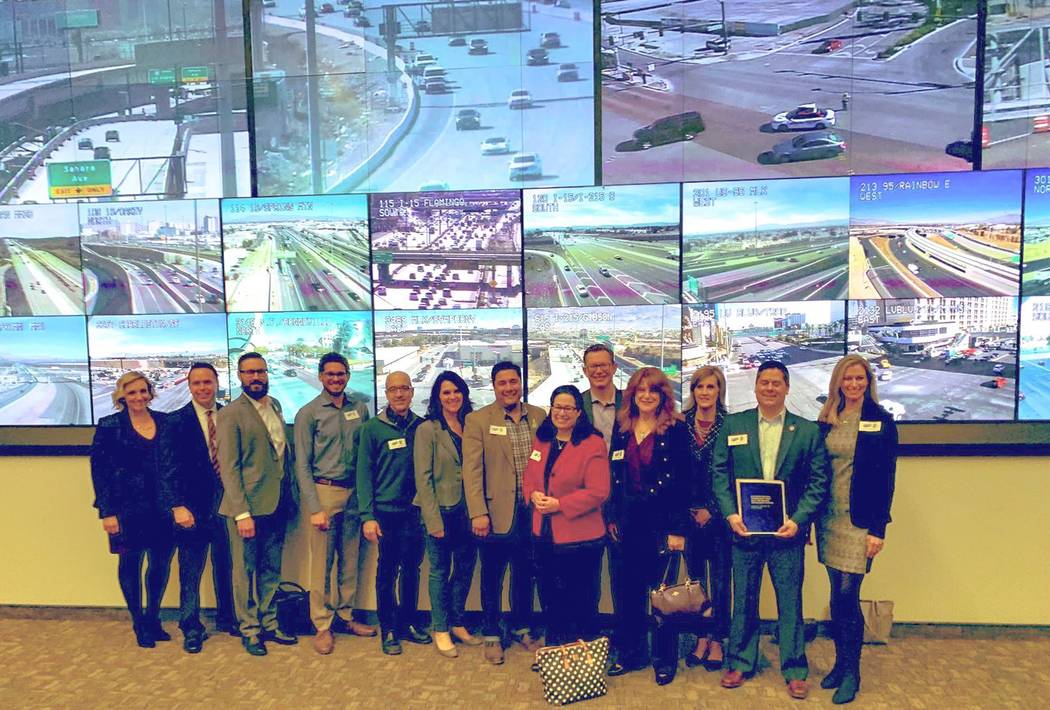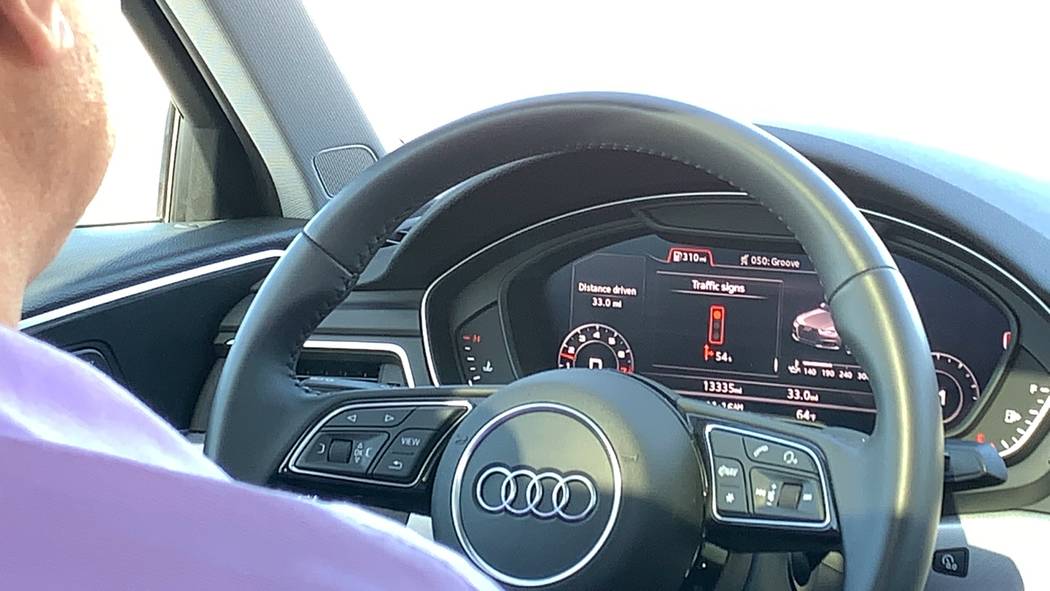Nevada lawmakers look to keep road to smarter transportation clear
State lawmakers will look to avoid being roadblocks as Southern Nevada further drives into the future of technology.
At the Regional Transportation Commission of Southern Nevada traffic management center, the Nevada Tech Caucus took a look Monday at the latest technology being deployed on Las Vegas Valley roads.
Made up of nine Assembly members and five state senators, the caucus is dedicated to informing colleagues in the Legislature on technology issues.
The caucus was on its Southern Nevada tour, which touched on technological impacts in multiple aspects of life in Nevada, from gaming and water management to transportation.
“The practical application of technology in everyday life like traffic management, making traffic more efficient, being able to predict where accidents might occur,” said Assemblyman Steve Yeager, D-Las Vegas and member of the caucus. “That’s ultimately going to lead to a better driving experience, as hundreds of thousands of Nevadans are on these roadways every day.”
With most technology used in transportation projects needing some form of legislation to approve it, the Legislature’s goal is not to stand in the way of potential growth, Yeager said.
“On the transportation side, we want to make sure we don’t put up any impediments or barriers to what we’ve seen, whether it’s autonomous vehicles, traffic management or anything else,” he said. “We want to make sure we’re not overly restrictive, and we’ll see where the technology goes.”
Technology demonstrated to the caucus Monday included the Keolis autonomous shuttle, Audi’s countdown to green program and Waycare, which provides smart cities with mobility products and services that are based on artificial intelligence.
Nevada Highway Patrol Trooper Clifford Fontaine applauded the Waycare program, saying that the pairing of it with the smartphone navigation app Waze on a tablet in troopers’ vehicles has streamlined response on valley roadways.
When a call comes in and a trooper is dispatched, it will pop to the top of the screen on Waycare, where troopers can see where the incident is. It can also bring up camera views of the incident, allowing for a proper response before troopers arrive.
“This has come to great help of me personally on Interstate 15 and Sahara Avenue,” Fontaine said. “When it sounded like it was a minor crash, looking at the cameras, I could see all the lanes were crashed. So we knew before we even got there that we were going to need way more assistance.”
The NHP works with the state Department of Transportation’s Freeway Service Patrol, which also has Waycare-enabled tablets onboard its vehicles. It also works with other agencies when responding to incidents on valley freeways.
In working with legislators and the people they represent, Yeager said, one concern is the safety of the data used in technology-driven transportation programs.
“There are concerns about who owns that data, how’s it going to be protected, and (how to) make sure that it’s not going to be hacked into,” Yeager said. “That’s one of a few concerns, but our main goal is to make sure we don’t get in the way.”
Francis Julien, Keolis Las Vegas operations general manager, said that among the main reasons the company chose Las Vegas for its yearlong autonomous shuttle pilot program are the willingness of politicians to spearhead innovation and the transportation commission’s being a singular group. The pilot program ended in November, giving almost 35,000 rides on its loop in downtown Las Vegas.
“If we were to go in Los Angeles, we would have to contact 166 different agencies to be able to sync with all of the traffic light management’” Julien said. “Here, it’s just one call.”
With Gov. Steve Sisolak replacing outgoing Gov. Brian Sandoval, Yeager sees many of the same goals going forward, with a focus on diversifying the workforce. That’s something technology jobs play a big role in, he said.
“We’re a week out from the start of this legislative session, and we have 14 members here spending an entire day learning about this technology,” he said. “We want to be accessible. We want to help educate other members of the Legislature, so I think that’s one of the main goals today. The legislators here are approachable, and we’re ready and willing to hear new ideas and hopefully move the state forward.”
Contact Mick Akers at makers@reviewjournal.com or 702-387-2920. Follow @mickakers on Twitter.
Waycare in action
■ Test area: Interstate 15 northbound between Charleston Boulevard and Russell Road.
■ How it works: Uses in-vehicle technology, existing cameras and sensors and traffic data to develop predictive analytics. Waycare alerts traffic agencies when and where to take preventative action when a crash takes place.
■ Crash identification time: 12 minutes faster
■ Crash reduction: 17 percent

























